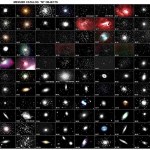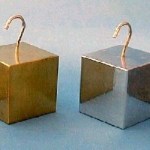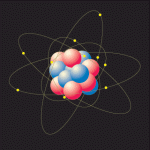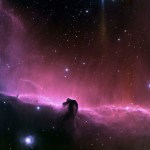emission
"Why I came here, I know not; where I shall go it is useless to inquire - in the midst of myriads of the living and the dead worlds, stars, systems, infinity, why should I be anxious about an atom?" -Lord Byron
Welcome back to another Messier Monday here on Starts With a Bang! Messier's 18th-Century catalogue of 110 deep-sky objects that could potentially be confused with comets by skywatchers has endured as one of the greatest collections of deep-sky objects clearly visible to amateur and professional astronomers worldwide!
Image credit: ScienceSouth - Tony's Astronomy Corner, via http://…
"According to the special theory of relativity nothing can travel faster than light, so that if light cannot escape, nothing else can either. The result would be a black hole: a region of space-time from which it is not possible to escape to infinity." -Stephen Hawking
You may have encountered objects that are the same size as one another, but have very different masses.
Image credit: Basic Science Supplies / © Accelerate Media.
This is because they're made out of different elements. The higher you go in the periodic table, the larger and more massive your individual atoms are, and so…
This has been all over my inbox since the press release came out yesterday; it's been on slashdot (thanks Brian), it's been at space.com, and there's a mediocre writeup on Universe Today. What's the big news? Black Holes don't destroy information after all!
What is this whole information thing, anyway? Take a look at all the normal stuff in the Universe: photons, protons, neutrons, and electrons, for example. They have lots of different properties each. They move around one another, they get bound and unbound from one another, they exert forces on one another, etc. They're aware of one…
Ever seen the Horsehead Nebula? If you look at the easternmost star in Orion's Belt through a telescope, you're likely to see something like this (the star is just off the image to your left):
A pretty little nebula, to be sure, but it doesn't look all that spectacular. I mean really, there's a fancy emission nebula behind some dust, that happens to look like a horse's head. It's mostly cloud-watching in space.
But then I saw a picture where Star Shadows Remote Observatory decided to over-expose the horsehead nebula and the area around it. Now, overexposing a region of sky is how you see…



